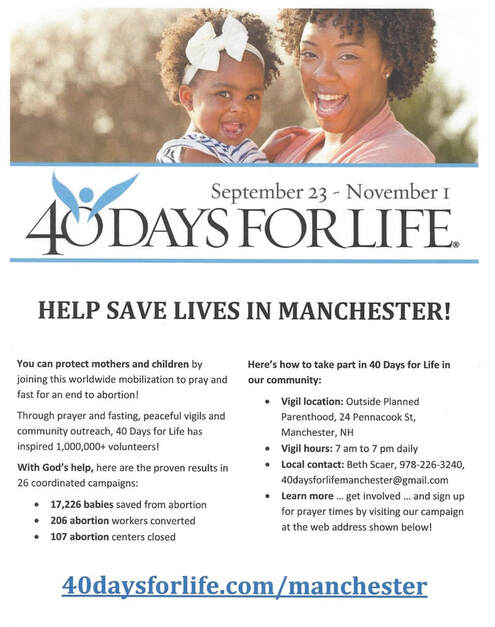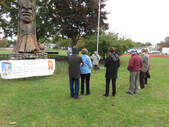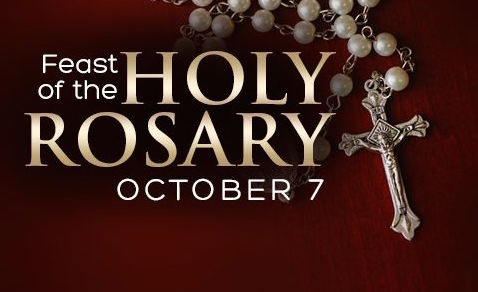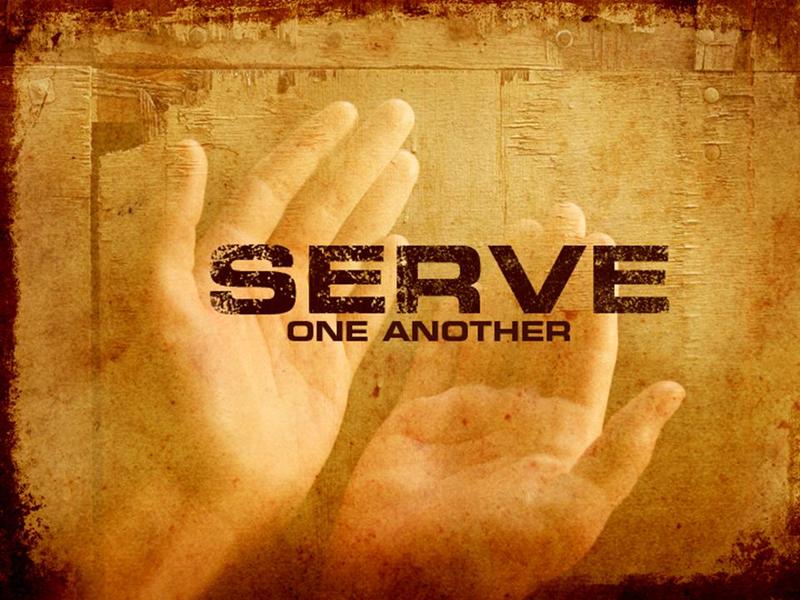|
|
40 Days for Life / September 23-November 1
|
40 Days for Life is a prolife campaign that emphasizes peaceful, compassionate, nonpolitical activism.
|
28th Annual Life Chain / Sunday October 4 at 12:30
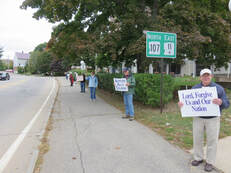
The 28th Annual Laconia will be held Sunday October 4, from 1-2:30 p.m. Sponsored by the St. André Bessette Catholic Parish, all are welcome to participate in this 90 minute silent prayer vigil, praying for our nation for the end of abortion. This is a visual statement of solidarity by the Christian community supporting the sanctity of all human life from the moment of conception until natural death.
Participants are asked to meet at the Laconia City Hall parking lot, 45 Beacon St. East between 12:30 and 12:45 pm. After a brief time of prayer, participants will proceed to the Union Ave. where we will pray silently for the end to abortion while holding life affirming signs.
For additional information, please contact Pat Kiefer at (603) 528-2326 or [email protected].
Participants are asked to meet at the Laconia City Hall parking lot, 45 Beacon St. East between 12:30 and 12:45 pm. After a brief time of prayer, participants will proceed to the Union Ave. where we will pray silently for the end to abortion while holding life affirming signs.
For additional information, please contact Pat Kiefer at (603) 528-2326 or [email protected].
14th Annual Rosary Rally / Sunday October 10 at 12:00 Noon
Abortion and Voting: What Does the Church Teach?
September 8, 2020
It’s a little funny, being called “a pro-abort.” Some readers assumed from my article on voting that appeared online and in the Sept. 6 issue of Our Sunday Visitor that I wanted people to vote for Joe Biden.
I was only laying out the rules of the game. I wasn’t playing, or even commenting on the game. Many people had been saying that a Catholic can never vote for a pro-choice candidate, because doing so advances an intrinsic evil. The Church doesn’t teach that.
Then-Cardinal Joseph Ratzinger explained this almost two decades ago. The Church says that Catholics can vote for a pro-choice candidate as long as they don’t vote for him because he’s pro-choice and they have what he called “proportionate” reasons. The American bishops say “truly grave moral reasons.”
That’s one big mistake Catholics make about voting. Others make the opposite mistake. They treat voting as a matter of balancing several concerns whose importance you weigh yourself. They believe that abortion and the other life-and-death issues such as euthanasia aren’t necessarily more important than the others.
They reject the idea that our understanding of human dignity is closely tied to our understanding of the unborn child’s right to live, and, indeed, to every human being’s right to live and not to be killed because someone else wants him dead. They argue as if the cardinal hadn’t included the requirement that we have “proportionate” reasons to vote for a pro-choice candidate.
Defending Biden’s Catholicism in an article in Commonweal, John Gehring rightly speaks of the “interconnected social justice issues,” but balances the candidate’s radical promotion of abortion with his positions on other issues.
Father James Martin notes in a Facebook post that “neither party or candidate fully expresses Catholic teaching in its totality. Neither party fully expresses the vision of the world that Jesus offers in the Gospels. And both parties and candidates fail on important issues in the Church’s view.” Of course, and sadly, true. In voting, he explains, Catholics must consider “all the issues in light of the Gospels and Church teachings, and then [vote] by using their consciences.” Also true.
As far as this goes, Father Martin is saying things we need to hear. But not everything we need to hear. This second mistake is a subtler mistake than the first one, because it’s half-right.
It’s another matter of the rules. The rules of a game push you to play one way rather than another. The NFL’s rules in my youth favored a running game supplemented by a passing game. Today’s rules favor a passing game. So teams pass more than they run.
The rules of Catholic voting give abortion a central and crucial place. It’s not just one issue among many. It’s a defining issue, an orienting issue, the one that gives the foundation and sets the trajectory. The issues do interconnect, as Gehring says, but I think he sees them connecting like lines drawn on a page. However, I think they connect in the way a foundation connects to the house built on it.
We “privilege” the life issues, as the academics put it. The American bishops say this in their introductory letter to “Forming Consciences for Faithful Citizenship.” “The threat of abortion remains our preeminent priority,” they say, “because it directly attacks life itself, because it takes place within the sanctuary of the family, and because of the number of lives destroyed.”
They warn against “a moral equivalence that makes no ethical distinctions between different kinds of issues involving human life and dignity.” Intentionally killing people “is always wrong and is not just one issue among many.” We have a “preeminent obligation to protect innocent life from direct attack.”
In an earlier statement called “Living the Gospel of Life,” they call abortion and euthanasia the “preeminent threats to human dignity.” They “directly attack life itself, the most fundamental human good and the condition for all others.”
The bishops follow the popes. Life, Pope Benedict XVI says, “is the first good received from God and is fundamental to all others.” Pope St. John Paul II called the right to life, “the most basic and fundamental right and the condition for all other personal rights.”
Here’s why the second mistake is half right. The bishops make sure we remember the interconnection. They give examples of intrinsically evil acts we can’t support with our votes. The list begins with the life issue: abortion, euthanasia and assisted suicide.
It’s a longer list than we usually hear. It includes “genocide, torture, and the targeting of noncombatants in acts of terror or war … violations of human dignity, such as acts of racism, treating workers as mere means to an end, deliberately subjecting workers to subhuman living conditions, treating the poor as disposable … deliberately subjecting workers or the poor to subhuman living conditions, redefining marriage in ways that violate its essential meaning.” Pope St. John Paul II includes others in Evangelium Vitae: mutilation, torture, “subhuman living conditions, arbitrary imprisonment, deportation … disgraceful working conditions, where people are treated as mere instruments of gain rather than as free and responsible persons.”
Catholics are not single-issue voters, because the Church instructs us to consider many issues, because few candidates get it all right, and most get something very wrong. Some who seem to get it right don’t actually mean it and won’t act on it. Voting is complicated.
We have no easy rule for it. We have to think hard about it and try to vote for the candidate who most supports the common good as the Church presents it. We don’t vote for those who support intrinsic evils, unless we have a grave moral reason for doing so. And “grave” means really serious. We don’t vote just for the candidate we think slightly better, or slightly less worse, if he supports intrinsic evils. That’s the second mistake some Catholics make.
Catholics aren’t single-issue voters. The Gospel of Life isn’t just the Gospel of Unborn Life. But we are voters who take the life issue as fundamental and preeminent. The Gospel of Life begins with the life of the unborn.
Here’s one explanation why. Abortion is the issue that most reveals what a candidate thinks about all the other issues, whatever his official policies are. It shows what he really thinks of the human person and therefore what kind of society he wants to create. It’s a focusing issue, the clearest expression of a practical commitment either to obey the moral law and protect the integral good of the human person, or to reject them.
How seriously can we take a candidate’s claims to help the poor if he doesn’t care if they live or die before birth? If he believes human dignity is something we choose to give them by letting them be born, not something they have?
Everyone knows the unborn child is a human child, even if they don’t admit it. The most vulnerable people alive, the unborn, show most clearly the need to believe in the dignity of the human person simply because they’re human beings. They’re the test case for whether one thinks human beings are fundamentally creatures to be honored and valued or things to be used and discarded. That’s why abortion is our preeminent priority.
David Mills writes from Pennsylvania.
It’s a little funny, being called “a pro-abort.” Some readers assumed from my article on voting that appeared online and in the Sept. 6 issue of Our Sunday Visitor that I wanted people to vote for Joe Biden.
I was only laying out the rules of the game. I wasn’t playing, or even commenting on the game. Many people had been saying that a Catholic can never vote for a pro-choice candidate, because doing so advances an intrinsic evil. The Church doesn’t teach that.
Then-Cardinal Joseph Ratzinger explained this almost two decades ago. The Church says that Catholics can vote for a pro-choice candidate as long as they don’t vote for him because he’s pro-choice and they have what he called “proportionate” reasons. The American bishops say “truly grave moral reasons.”
That’s one big mistake Catholics make about voting. Others make the opposite mistake. They treat voting as a matter of balancing several concerns whose importance you weigh yourself. They believe that abortion and the other life-and-death issues such as euthanasia aren’t necessarily more important than the others.
They reject the idea that our understanding of human dignity is closely tied to our understanding of the unborn child’s right to live, and, indeed, to every human being’s right to live and not to be killed because someone else wants him dead. They argue as if the cardinal hadn’t included the requirement that we have “proportionate” reasons to vote for a pro-choice candidate.
Defending Biden’s Catholicism in an article in Commonweal, John Gehring rightly speaks of the “interconnected social justice issues,” but balances the candidate’s radical promotion of abortion with his positions on other issues.
Father James Martin notes in a Facebook post that “neither party or candidate fully expresses Catholic teaching in its totality. Neither party fully expresses the vision of the world that Jesus offers in the Gospels. And both parties and candidates fail on important issues in the Church’s view.” Of course, and sadly, true. In voting, he explains, Catholics must consider “all the issues in light of the Gospels and Church teachings, and then [vote] by using their consciences.” Also true.
As far as this goes, Father Martin is saying things we need to hear. But not everything we need to hear. This second mistake is a subtler mistake than the first one, because it’s half-right.
It’s another matter of the rules. The rules of a game push you to play one way rather than another. The NFL’s rules in my youth favored a running game supplemented by a passing game. Today’s rules favor a passing game. So teams pass more than they run.
The rules of Catholic voting give abortion a central and crucial place. It’s not just one issue among many. It’s a defining issue, an orienting issue, the one that gives the foundation and sets the trajectory. The issues do interconnect, as Gehring says, but I think he sees them connecting like lines drawn on a page. However, I think they connect in the way a foundation connects to the house built on it.
We “privilege” the life issues, as the academics put it. The American bishops say this in their introductory letter to “Forming Consciences for Faithful Citizenship.” “The threat of abortion remains our preeminent priority,” they say, “because it directly attacks life itself, because it takes place within the sanctuary of the family, and because of the number of lives destroyed.”
They warn against “a moral equivalence that makes no ethical distinctions between different kinds of issues involving human life and dignity.” Intentionally killing people “is always wrong and is not just one issue among many.” We have a “preeminent obligation to protect innocent life from direct attack.”
In an earlier statement called “Living the Gospel of Life,” they call abortion and euthanasia the “preeminent threats to human dignity.” They “directly attack life itself, the most fundamental human good and the condition for all others.”
The bishops follow the popes. Life, Pope Benedict XVI says, “is the first good received from God and is fundamental to all others.” Pope St. John Paul II called the right to life, “the most basic and fundamental right and the condition for all other personal rights.”
Here’s why the second mistake is half right. The bishops make sure we remember the interconnection. They give examples of intrinsically evil acts we can’t support with our votes. The list begins with the life issue: abortion, euthanasia and assisted suicide.
It’s a longer list than we usually hear. It includes “genocide, torture, and the targeting of noncombatants in acts of terror or war … violations of human dignity, such as acts of racism, treating workers as mere means to an end, deliberately subjecting workers to subhuman living conditions, treating the poor as disposable … deliberately subjecting workers or the poor to subhuman living conditions, redefining marriage in ways that violate its essential meaning.” Pope St. John Paul II includes others in Evangelium Vitae: mutilation, torture, “subhuman living conditions, arbitrary imprisonment, deportation … disgraceful working conditions, where people are treated as mere instruments of gain rather than as free and responsible persons.”
Catholics are not single-issue voters, because the Church instructs us to consider many issues, because few candidates get it all right, and most get something very wrong. Some who seem to get it right don’t actually mean it and won’t act on it. Voting is complicated.
We have no easy rule for it. We have to think hard about it and try to vote for the candidate who most supports the common good as the Church presents it. We don’t vote for those who support intrinsic evils, unless we have a grave moral reason for doing so. And “grave” means really serious. We don’t vote just for the candidate we think slightly better, or slightly less worse, if he supports intrinsic evils. That’s the second mistake some Catholics make.
Catholics aren’t single-issue voters. The Gospel of Life isn’t just the Gospel of Unborn Life. But we are voters who take the life issue as fundamental and preeminent. The Gospel of Life begins with the life of the unborn.
Here’s one explanation why. Abortion is the issue that most reveals what a candidate thinks about all the other issues, whatever his official policies are. It shows what he really thinks of the human person and therefore what kind of society he wants to create. It’s a focusing issue, the clearest expression of a practical commitment either to obey the moral law and protect the integral good of the human person, or to reject them.
How seriously can we take a candidate’s claims to help the poor if he doesn’t care if they live or die before birth? If he believes human dignity is something we choose to give them by letting them be born, not something they have?
Everyone knows the unborn child is a human child, even if they don’t admit it. The most vulnerable people alive, the unborn, show most clearly the need to believe in the dignity of the human person simply because they’re human beings. They’re the test case for whether one thinks human beings are fundamentally creatures to be honored and valued or things to be used and discarded. That’s why abortion is our preeminent priority.
David Mills writes from Pennsylvania.
Abortion in America
Dr. Bernard N. Nathanson, was America’s “Abortion King” and is primarily responsible for unleashing the abortion monster on America. In 1969, by using his skill and reputation as an OB/GYN, he co-founded what is known today as NARAL Pro-Choice America, a political action organization with the goal to spread its pro-abortion mentality across America. In the late 1960’s and early 1970’s, Nathanson became abortion’s public face as he carried out NARAL’s 8-point propaganda strategy—including the specific targeting of Catholics—to deceive the American public and the courts into accepting legalized abortion.
Dr. Nathanson claimed responsibility for the deaths of over 75,000 unborn babies, including two of his own children. He personally aborted 5,000 babies, instructed doctors how to perform abortion on 10,000 babies, and while he ran the largest abortion facility in the U.S., another 60,000 babies were slaughtered under his management.
Appearing as abortion’s expert medical witness, Dr. Nathanson lobbied legislators and testified in legislative hearings across America. He paved the way for the 1973 Roe v. Wade decision legalizing abortion in America. Many find it hard to forgive him for what he did. However, you may be very surprised to learn that he eventually converted to a prolife position, sought God’s forgiveness, and was baptized into the Catholic faith. (Hosea Initiative’s “FACT CHECK” booklet)
Dr. Nathanson claimed responsibility for the deaths of over 75,000 unborn babies, including two of his own children. He personally aborted 5,000 babies, instructed doctors how to perform abortion on 10,000 babies, and while he ran the largest abortion facility in the U.S., another 60,000 babies were slaughtered under his management.
Appearing as abortion’s expert medical witness, Dr. Nathanson lobbied legislators and testified in legislative hearings across America. He paved the way for the 1973 Roe v. Wade decision legalizing abortion in America. Many find it hard to forgive him for what he did. However, you may be very surprised to learn that he eventually converted to a prolife position, sought God’s forgiveness, and was baptized into the Catholic faith. (Hosea Initiative’s “FACT CHECK” booklet)
The pro-abortion organization NARAL, founded by the “Abortion King” Dr. Bernard Nathanson and his colleague Lawrence Lader, worked diligently and deceptively to get abortion decriminalized on the state level beginning in their home state of New York. They led the NARAL team in selling its dream of abortion on demand by using an 8-point propaganda strategy.
They were very successful. In 1970, the New York legislature overturned a 140-year-old pro-life law. Dr. Nathanson urged Planned Parenthood to help NARAL advance the abortion movement, but they declined until they saw the potential revenues from abortion. Shortly after New York decriminalized abortion, Dr. Nathanson trained Planned Parenthood doctors on how to abort babies in the womb. NARAL’s methods, with Dr. Nathanson as its medical spokesperson, powerfully changed the cultural tide on abortion in a few short years. (Hosea Initiative’s “FACT CHECK”)
They were very successful. In 1970, the New York legislature overturned a 140-year-old pro-life law. Dr. Nathanson urged Planned Parenthood to help NARAL advance the abortion movement, but they declined until they saw the potential revenues from abortion. Shortly after New York decriminalized abortion, Dr. Nathanson trained Planned Parenthood doctors on how to abort babies in the womb. NARAL’s methods, with Dr. Nathanson as its medical spokesperson, powerfully changed the cultural tide on abortion in a few short years. (Hosea Initiative’s “FACT CHECK”)
Prior to the passage of Roe v. Wade legalizing abortion, Dr. Bernard Nathanson (“The Abortion King”) and his pro-abortion organization NARAL, wanted to make abortion more acceptable within the general public. To do this, they developed an 8-point strategy.
Point #1 was to frame the argument.
NARAL did not frame the debate around the “right to kill a pre-born child.” That slogan would not have attracted followers. Instead the debate was framed simply as a CHOICE to stay pregnant or not. This played on the American love for freedom and made it appear that abortion is just a CHOICE and a DECISION between a woman and her doctor. Fathers were stripped of their right to protect their children as abortion was marketed to bring women freedom and equality with men. NARAL was extremely crafty to distract people from thinking what they were choosing. According to Dr. Nathanson, NARAL denied in public what they admitted in private to be true – abortion kills an existing human being. (Hosea Initiative’s “FACT CHECK”).
Point #1 was to frame the argument.
NARAL did not frame the debate around the “right to kill a pre-born child.” That slogan would not have attracted followers. Instead the debate was framed simply as a CHOICE to stay pregnant or not. This played on the American love for freedom and made it appear that abortion is just a CHOICE and a DECISION between a woman and her doctor. Fathers were stripped of their right to protect their children as abortion was marketed to bring women freedom and equality with men. NARAL was extremely crafty to distract people from thinking what they were choosing. According to Dr. Nathanson, NARAL denied in public what they admitted in private to be true – abortion kills an existing human being. (Hosea Initiative’s “FACT CHECK”).
Point #2 was to craft slogans.
Dr. Nathanson helped devise the cunning slogans which marketed the idea that abortion—the intentional killing of an unborn baby—is a woman’s decision, her right, a prerogative to use her body as she chooses (“My Body, My Choice” and “Abortion is Personal Decision” and “Children by Choice”). NARAL introduced the idea of abortion as “Women’s Healthcare” making it appear that women’s unique gift of child-bearing was an illness. The life of the child was not a consideration, nor how abortion would affect the physical, emotional, and spiritual health of mothers and fathers, forever eroding the foundation of society. As Dr. Nathanson stated, “We put a spin on the information.” (Hosea Initiative’s “FACT CHECK”).
Dr. Nathanson helped devise the cunning slogans which marketed the idea that abortion—the intentional killing of an unborn baby—is a woman’s decision, her right, a prerogative to use her body as she chooses (“My Body, My Choice” and “Abortion is Personal Decision” and “Children by Choice”). NARAL introduced the idea of abortion as “Women’s Healthcare” making it appear that women’s unique gift of child-bearing was an illness. The life of the child was not a consideration, nor how abortion would affect the physical, emotional, and spiritual health of mothers and fathers, forever eroding the foundation of society. As Dr. Nathanson stated, “We put a spin on the information.” (Hosea Initiative’s “FACT CHECK”).
Point #3 was to manipulate and use the media.
Because Dr. Nathanson was such an accomplished medical doctor, he was thought of as a voice of authority. The media trusted him, and accepted whatever he told them as true. Reporters rarely scrutinized his facts and figures. Dr. Nathanson had that much influence. His lies were used to manipulate the media to NARAL’s advantage. Dr. Nathanson knew the media would spread whatever message he told them like wildfire. (Hosea Initiative’s “FACT CHECK”). Additional strategies will be covered in future bulletins.
Because Dr. Nathanson was such an accomplished medical doctor, he was thought of as a voice of authority. The media trusted him, and accepted whatever he told them as true. Reporters rarely scrutinized his facts and figures. Dr. Nathanson had that much influence. His lies were used to manipulate the media to NARAL’s advantage. Dr. Nathanson knew the media would spread whatever message he told them like wildfire. (Hosea Initiative’s “FACT CHECK”). Additional strategies will be covered in future bulletins.
Point #4 was to fabricate facts AKA “tell lies.”
In later years Dr. Nathanson admitted making up all the statistical data. He reported that ONE MILLION women had illegal abortions each year and 5,000 to 10,000 women died every year due to so called “back-alley” abortions. He made it sound like an epidemic and a national crisis. Those numbers were outrageous lies. In reality, there were about 98,000 illegal abortions--a 1020% overestimate, and an average of 250 abortion-related deaths annually--a 4000% over estimate. (Hosea Initiative’s “FACT CHECK”). Additional strategies will be covered in future bulletins.
In later years Dr. Nathanson admitted making up all the statistical data. He reported that ONE MILLION women had illegal abortions each year and 5,000 to 10,000 women died every year due to so called “back-alley” abortions. He made it sound like an epidemic and a national crisis. Those numbers were outrageous lies. In reality, there were about 98,000 illegal abortions--a 1020% overestimate, and an average of 250 abortion-related deaths annually--a 4000% over estimate. (Hosea Initiative’s “FACT CHECK”). Additional strategies will be covered in future bulletins.
Point #5 was to quote false polling statistics.
Every revolution needs persuasive statistics to garner the support of more people, so Dr. Nathanson lied using a fake polling statistic that sounded impressive. He reported to the media that 60% of all Americans wanted universal abortion-on-demand legalized. The real statistic was that only 1/10th of 1% of all Americans in the late 1960s and early 1970s wanted abortion-on-demand legalized. The polling numbers were exaggerated 600-fold! It is hard to believe so many people bought this audacious lie. “The manipulation of the media was crucial,” said Dr. Nathanson. (Hosea Initiative’s “FACT CHECK”). Additional strategies will be covered in future bulletins.
Every revolution needs persuasive statistics to garner the support of more people, so Dr. Nathanson lied using a fake polling statistic that sounded impressive. He reported to the media that 60% of all Americans wanted universal abortion-on-demand legalized. The real statistic was that only 1/10th of 1% of all Americans in the late 1960s and early 1970s wanted abortion-on-demand legalized. The polling numbers were exaggerated 600-fold! It is hard to believe so many people bought this audacious lie. “The manipulation of the media was crucial,” said Dr. Nathanson. (Hosea Initiative’s “FACT CHECK”). Additional strategies will be covered in future bulletins.
Point #6 was to repeat the lies told previously.
When the media repeats a lie over and over, it begins to sound like it is the truth, even though it is not. The media’s repetition of lies – as is still being done today – is one of the most influential tactics in changing public opinion. NARAL relied on this essential partnership to propagate its fabrications. The media acted like a strong wind over a field of dandelions, sowing the seed of untruth far and wide. Dr. Nathanson said, “the breaches of ethics, unprincipled distortions, and outright lies foisted on the poor public by the mega-press may never be fully appreciated since it is axiomatic that the press controls the press.” (Hosea Initiative’s “FACT CHECK”). Additional strategies will be covered in future bulletins.
When the media repeats a lie over and over, it begins to sound like it is the truth, even though it is not. The media’s repetition of lies – as is still being done today – is one of the most influential tactics in changing public opinion. NARAL relied on this essential partnership to propagate its fabrications. The media acted like a strong wind over a field of dandelions, sowing the seed of untruth far and wide. Dr. Nathanson said, “the breaches of ethics, unprincipled distortions, and outright lies foisted on the poor public by the mega-press may never be fully appreciated since it is axiomatic that the press controls the press.” (Hosea Initiative’s “FACT CHECK”). Additional strategies will be covered in future bulletins.
Point #7 justified decriminalizing abortion.
Dr. Nathanson justified decriminalization because he thought legalization would not cause the number of abortions to increase. He believed women who seek abortions would procure the procedure whether it was legal or not. The truth is, as soon as abortion was “legal” (1973), demand for the procedure shot up from 98,000 to over 1 million abortions per year. Dr. Nathanson learned that legalizing something increases the demand. It also increased the intense pressure on women to abort by men and parents who preferred a $300 quick “solution” over saving the life of the child. (Hosea Initiative’s “FACT CHECK”). Next week we will cover the final point in the strategy—the one that focused specifically on Catholics.
Dr. Nathanson justified decriminalization because he thought legalization would not cause the number of abortions to increase. He believed women who seek abortions would procure the procedure whether it was legal or not. The truth is, as soon as abortion was “legal” (1973), demand for the procedure shot up from 98,000 to over 1 million abortions per year. Dr. Nathanson learned that legalizing something increases the demand. It also increased the intense pressure on women to abort by men and parents who preferred a $300 quick “solution” over saving the life of the child. (Hosea Initiative’s “FACT CHECK”). Next week we will cover the final point in the strategy—the one that focused specifically on Catholics.



